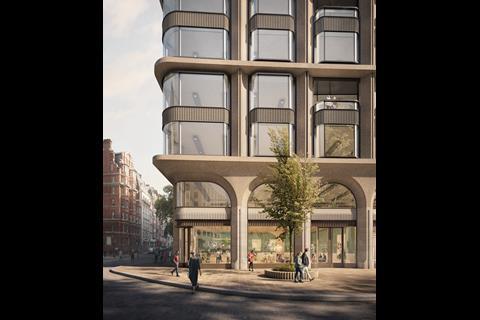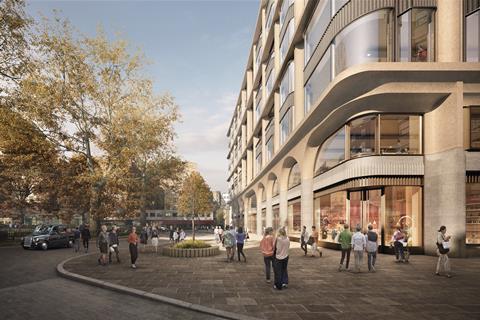Current Lansdowne House was built in 1980s and has heritage stretching back to 1760s
Mace is favourite to land a £150m scheme to redevelop a building on London’s Berkeley Square which was property developer Stanhope’s office for several years in the 1980s and 90s.
AHMM is behind the proposal to replace Lansdowne House, built in 1987 by Chapman Taylor, with a new commercial building that was OK’d by Westminster council two years ago.
The Chapman Taylor building at 57 Berkeley Square replaced one built in the 1930s and is a post-modern office block that occupies the whole of the southern end of the square and stretches back for a block towards Piccadilly.
Building understands Mace is set to sign on the dotted line, having beaten Multiplex, which had its London office on Berkeley Square when it was rebuilding Wembley stadium in the mid-2000s, and Laing O’Rourke, tipped as the team to beat - although the firm can console itself with the news that it has been appointed to carry out the first phase of work on a £700m life sciences scheme called Oxford North which is being developed by a Stanhope joint venture.
Work involves upgrading the block to feature 10 storeys of office space running across 225,000 sq ft.
Development manager CO-RE, which is also behind the stalled ITV studios job on London’s South Bank as well as the 120 Fleet Street scheme which Mace lost out to Lendlease on, said the scheme will have 14,000 sq ft of retail and restaurants on the ground floor while public realm improvements are also planned. The new project will include 480 cycle spaces with showers, lockers and changing facilities.
Others working on the project include QS Alinea, structural engineer AKT II, building services engineer Aecom and planning consultant Gerald Eve.
The project site occupies the former garden of the original Lansdowne House, now known as the Lansdowne Club and standing just across the road, which was designed by Robert Adam in the 1760s.
Its occupants included former prime ministers including William Pitt the Younger as well as Gordon Selfridge, founder of the department store.
Its first owner Lord Shelburne is said to have drafted the peace treaty with America in 1782 in what is now its cocktail bar. He was created first Marquess of Lansdowne, from which both buildings now take their name.
The building was partially demolished to make way for a road and was converted into a private members’ club in the 1930s, with members including fashion designer Paul Smith, artist Beryl Cook and chef and heritage campaigner Loyd Grossman.































No comments yet